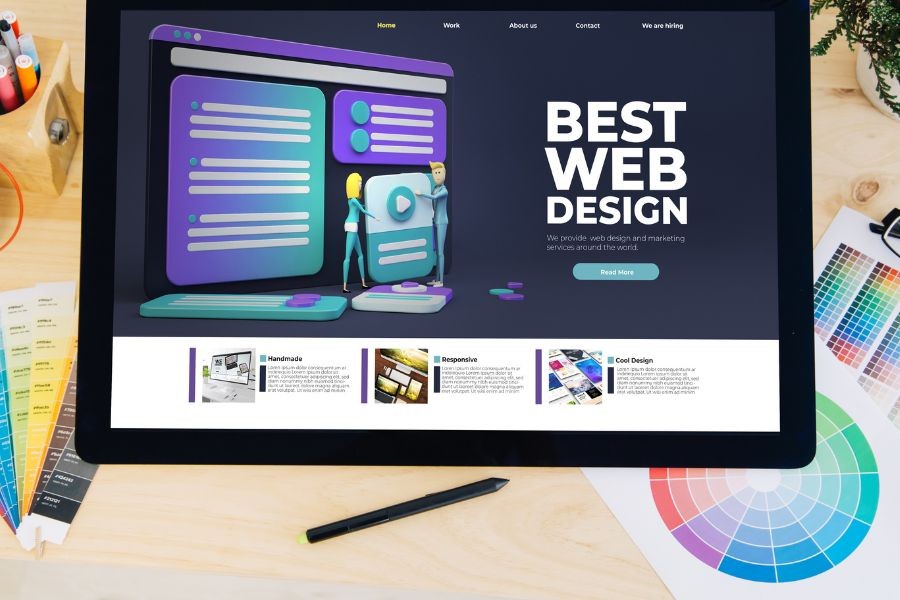In the digital age, a successful website is the perfect harmony of compelling content and stunning design. While visually appealing websites grab attention, meaningful content keeps users engaged and converts visitors into customers. Finding the right balance between content and design ensures your website is both beautiful and functional, delivering a seamless user experience that drives results.
If you’re wondering how to achieve this harmony, read on to discover practical tips and how
DMN8 Partners can help create a website that strikes the perfect balance.
1. Why Content and Design Are Equally Important
Both content and design play critical roles in delivering a great website experience, but their success relies on each other.
Content:
- Communicates your brand’s message, services, and unique selling points.
- Drives search engine optimization (SEO), helping your website rank higher in search results.
- Provides value to visitors through informative blogs, engaging headlines, and clear CTAs.
Design:
- Grabs attention and makes the site visually appealing.
- Creates a user-friendly experience by guiding visitors through the site seamlessly.
- Establishes credibility and builds trust with a professional layout and visuals.
Example:
A clean, modern website with beautiful images will lose its effectiveness if the content is weak, unclear, or irrelevant. Likewise, excellent content will be overlooked if it’s presented with a cluttered design that frustrates users.
2. Content Should Drive Design—Not the Other Way Around
The most effective websites prioritize content first, ensuring that the design supports the message rather than distracting from it. Your design should enhance content and make it easy to consume, not compete for attention.
How to Let Content Lead the Way:
- Start with Clear Messaging: Craft strong headlines, engaging body text, and action-oriented calls-to-action (CTAs).
- Use Visual Hierarchy: Place the most important content (e.g., services, benefits, or CTAs) front and center.
- Design for Readability: Use legible fonts, ample white space, and clean layouts that make content easy to scan.
- Avoid Clutter: Remove unnecessary design elements that might overshadow your message.
Example:
If you’re a local landscaping business, your homepage design should emphasize:
- A bold headline like “Transform Your Outdoor Spaces with Expert Landscaping”.
- Clear service offerings with images of completed projects.
- A prominent CTA: “Get a Free Quote Today.”
The design supports the content by guiding the visitor’s eye to key messages and actions.
3. Visual Design Enhances the Content Experience
While content delivers the message, visual design enhances how users interact with and digest that information. Great design makes your website visually engaging while reinforcing the overall message.
How Design Elevates Content:
- Use Imagery to Complement Content: High-quality images and graphics should support your content, showcasing products, services, or team members.
- Incorporate Branding Elements: Consistent fonts, colors, and logos strengthen brand recognition.
- Focus on Responsive Design: Ensure your website looks great on any device, so content remains accessible everywhere.
- Include Visual Breaks: Use design elements like headings, bullet points, and icons to break up large chunks of text.
Pro Tip: Avoid unnecessary animations or cluttered visuals that distract from the main message. Keep it clean, professional, and user-friendly.
4. Finding the Right Balance: Content and Design Best Practices
Striking the perfect balance between content and design requires intentional strategy and execution. Follow these best practices to create a harmonious website:
Content Tips:
- Write for your audience—address their pain points, goals, and questions.
- Keep it concise: Avoid overwhelming visitors with long blocks of text.
- Optimize for SEO: Use keywords naturally in your headlines, body copy, and meta descriptions.
- Guide users to action: Include clear CTAs like “Contact Us,” “Learn More,” or “Shop Now.”
Design Tips:
- Prioritize readability with large, legible fonts and sufficient white space.
- Use visuals sparingly but purposefully: Include images, icons, and videos that support the content.
- Ensure responsive design so your site works seamlessly on all devices.
- Highlight key content with contrasting colors or bold headings to guide visitors’ attention.
Example:
A plumbing company’s website might include a bold, clean layout with:
- A hero section headline like “Fast and Reliable Plumbing Services in Cincinnati.”
- Service sections with short descriptions and relevant images.
- A simple CTA button like “Schedule an Appointment.”
This combination of strong content and intuitive design keeps users focused and encourages action.
FAQs About Balancing Content and Design
Q: Should I focus on content or design first?
A: Content should drive design. Start with clear messaging, then build a design that supports and enhances that content.
Q: How does design impact conversions?
A: A clean, user-friendly design helps visitors navigate your site easily, highlighting CTAs and key messages to encourage conversions.
Q: Can too much design hurt my website?
A: Yes. Overly complex or cluttered designs can distract visitors, slow load times, and reduce readability, leading to higher bounce rates.
Partner with DMN8 Partners for a Balanced Website That Delivers Results
At
DMN8 Partners, we understand that a great website combines impactful content with strategic design. Our team specializes in creating websites that not only look beautiful but also convert visitors into loyal customers. Call us today at
(859) 757-2252 or visit
salvonow.com to learn how we can help you strike the perfect balance between content and design for a website that drives your business forward.
Check Out Our Socials
Facebook |
Instagram |
LinkedIn |
Tik Tok |
YouTube

